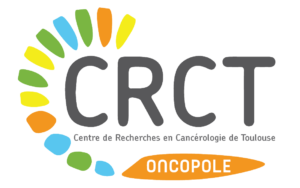
Dialogue between glioblastoma stem cells and macrophages
Valérie Gouaze-Andersson
We have studied and identified several pathways involved in the control of the microenvironment, including angiogenesis and hypoxia, and modulating radioresistance. In particular, FGFR1 and several integrins have been identified as key factors in the radioresistance of glioablstomas. Many factors involved in radioresistance are also involved in the modulation of other components of the microenvironment. Abundant tumour-associated macrophage (TAM) infiltration is a common feature of all glioblastomas with a correlation between TAM infiltration and poor glioblastoma prognosis. Moreover, irradiation favours an increase in the proportion of pro-tumour M2 macrophages that are more radioresistant than tumour suppressor M1 macrophages. The aim of our axis is to determine and modulate the expression of factors involved in the glioblastoma stem cell/TAM dialogue that promote the migration of TAMs and their polarisation into M2 protumoral macrophages, and in particular the receptor tyrosine kinase FGFR1, which has been shown to be involved in the radioresistance of differentiated and stem cells of glioblastoma.
In addition to these preclinical studies, we determine biomarkers and therapeutic targets from blood samples of patients included in various clinical trials of the IUCT radiotherapy department combining radiotherapy with various treatments (immunotherapy, pharmacological molecules, etc.). For this purpose, we are analysing the content of exosomes, vesicles secreted by tumour cells, as well as cytokines in response to treatments.
Finally, we also study the phenomena of resistance to other physical agents used in the treatment of glioblastoma.

